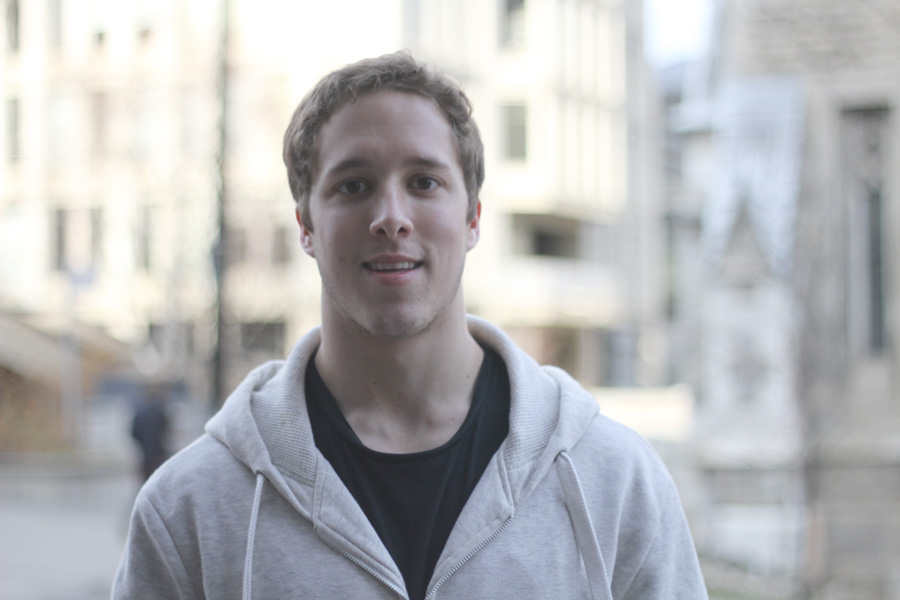Enclosed within the Wong building is a laser lab—and in between homework and classes, this is where Luke Matus spends the majority of his time.
“I’m in chemical engineering, so I had no experience in lasers or surface engineering,” said Matus, a U2 engineering student. “I was just interested in getting into research in general, and I had talked to the professor about it.”
Matus became involved with the biomedical service-engineering lab through the Summer Undergraduate Research program for Engineers (SURE), where he works under the supervision of associate professor Anne Kietzig and the PhD student Jorge Lehr. After spending this past summer at the lab, Matus decided to continue his involvement the following year. Currently, he is finishing off parts of his summer project, and he will complete a research course at the lab next semester.
Matus explained that joining a team when he had no experience in the field was a challenging task.
“The first two weeks of the project were [focused on] reading all of the papers published about lasers and about their surfaces and wetting behaviour,” Matus said. “There was a huge learning curve, and continued as I went along.”
Despite the initial challenge, the experience pushed Matus to develop his problem solving skills.
“A lot of times, you have to learn on-the-go, and if you don’t know how to do something yourself, it takes way longer,” he said. “You [figure out] how to do things yourself, [which] speeds up your project as you learn how to solve the small issues that always arise in research.”
“If there is a problem with the laser, I don’t troubleshoot the laser,” Matus joked.
Matus’ project involved a infrared femtosecond-pulse laser set-up, which performs infrared labeling. By mounting titanium samples on a stage in front of the laser, he can use the laser to alter the surface of the sample. Then, Matus changes the properties of the samples and tests them to see how the laser affects these new surfaces. Matus explained that he is looking to design the samples to have specific wetting behaviour—the ability of a liquid to maintain contact with the surface—on the surfaces.
“There is a big box [in the lab], which is the laser,” Matus explained. “Then there are a ton of equipment and different boxes that run different programs within the laser—they have different functionalities [….] Once you have everything set up you open [the laser] and there are samples on the stage. The stage is controlled by a computer and you have a program that completes whatever pattern you want.”
While Matus enjoyed his time at the lab, he is thinking of applying to an industry job next summer. “I really like the research […] but I want to try something else.” He explained that research might be a possibility for his future, but is still eager to explore many fields of engineering to find out what fits best for his career path.
That said, Matus found his work at the lab highly rewarding—both in terms of how it pushed him as a student and the results he acquired.
“I guess one of the things that stuck out was that […] one of the conclusions that I came to sort of reflected on this paper [on which I had based my research], and I proved [an additional part of it] in my own research,” Matus said. “It was like ‘Oh, I looked at this PhD or grad student work and I actually contributed something, even if it’s not published.’ It was rewarding.”








